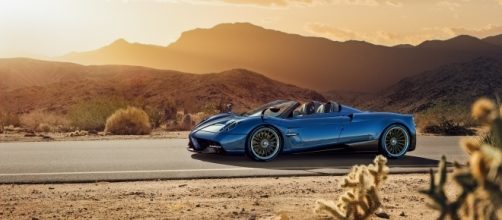The Geneva International Motor Show stands out as one of-if not the-most important motor shows of the year. Each year, the world's most illustrious auto makers gather in Geneva, Switzerland to show the world what their brand has in store. Previous years have seen the premiere of cars which will forever be held dear to auto enthusiasts. In 2013, the Geneva show included the premier of both the McLaren P1 and the Ferrari LaFerrari - two of the world's first hybrid-powered hypercars. 2014 saw the premier of the Koenigsegg One:1 - a hypercar boasting a one-to-one power-to-weight ratio.
Last year Bugatti revealed the Chiron, which is electronically limited to 260 miles per hour "for road travel," according to Bugatti.
This year, Italian supercar manufacturers Ferrari and Pagani have decided to spare us the anxiety, and reveal details of their most anticipated models ahead of the show. The new Ferrari 812 Superfast will replace the F12 Berlinetta as the marque's flagship V12 model, and the new Pagani Huayra Roadster will mark the next step in Pagani Automobili's evolution of the Huayra.
The climax of a tradition
The Ferrari 812 Superfast is more than just Ferrari's latest flagship production model. It is the continuation of Ferrari tradition, against all odds. While electric cars can now break speed records and even the most stubborn manufacturers have begun to shy away from large, thirsty V12 engines, Ferrari have been among the most stubborn.
With the 488 GTB, Ferrari have finally began to soften under the pressure and utilized the efficiency of turbochargers, creating a 3.9 liter V8 which produces 660 horsepower. When it comes to Ferrari's flagship mid-front engined flagship model, however, no such compromises would be made. Ferrari have held to their ground and powered the 812 with a 6.5 liter V12, which produces 789 horsepower at the rear brakes to bring out the "Mad" drifter in all of us.
The 812 Superfast even draws its name from Ferrari tradition, in which the Superfast name would be applied to cars which represented uncompromising luxury and performance.
Traditional engine layout, traditional V12, traditional name. Don't let that fool you into thinking the 812's performance is held back in the name of nostalgia.
Ferrari claims the car will be capable of 0 to 60 in just 2.9 seconds, and will have a top speed over 210 mph. The 812 also features Ferrari's dynamic rear steering from the F12TDF and Ferrari's first ever Electric Power Steering. In this case, tradition includes innovation.
The turn of a corner
In contrast to the tradition in which the 812 Superfast is wrapped, the Pagani Huayra Roadster marks a historic change in convertible supercars. Cabriolets, spiders, and roadsters alike have always suffered a fatal flaw. Because the roof is either missing or removable, a large portion of the supporting structure is missing as well. Without additional support, the car becomes floppy and flexible, something which is noticeable in the car's handling.
The necessary support however, creates a large amount of additional weight, which also negatively affects the car's handling. Recently, cars such as the McLaren 650S Spider have utilized Carbon Fibre monocoques, which are able to perform nearly as well as their coupe counterparts at nearly the same weight. The Huayra Roadster, on the other hand, utilizes a monocoque made of "Carbo-Titanium" and "Carbo-Triax HP52." This means the Huayra Roadster is 52% stiffer than the Huayra Coupe, while still weighing 80 Kg less, according to Pagani.
With 764 brake horsepower, the Huayra Roadster is also more powerful than the Huayra Coupe, and utilizes improvements made in the Huayra BC - a hardcore, track-ready version.
With no compromises being made in the name of open air, the Huayra Roadster might sound like the perfect car. Until you see the price tag, that is. The Huayra Roadster will start at a base price of €2,280,000, and only 100 will be made - which have, of course, all been sold.

